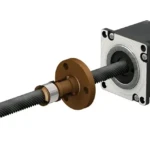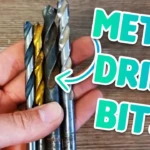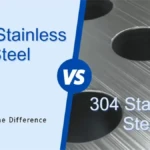Ranking of the ten largest bearing manufacturers in the world (sorted by sales)
|
Ranking |
Company Name |
Number of factories |
annual sales |
|
1 |
Swedish SKF |
90 |
5 billion US dollars |
|
2 |
Japan NSK |
28 |
$4.4 billion |
|
3 |
Japan KOYO |
17 |
3.2 billion US dollars |
|
4 |
Japan NTN |
27 |
$2.9 billion |
|
5 |
Japan NMB |
22 |
$2.7 billion |
|
6 |
United StatesTIMKEN |
24 |
$2.4 billion |
|
7 |
German FAG |
62 |
2 billion dollars |
|
8 |
Germany INA |
16 |
1.5 billion US dollars |
|
9 |
Japanese NACHI |
14 |
$1.4 billion |
|
10 |
TORRINGTON, United States |
10 |
1 billion US dollars |
Ranking list of Chinese bearing manufacturers (sorted by sales)
According to China Bearing Industry Association statistics on 96 major bearing manufacturers in the country in 2013, the list of top 30 Chinese bearing manufacturers by sales in 2013 is as follows:
|
Ranking |
Company Name |
Company abbreviation |
|
1 |
Renben Group Co., Ltd. |
Humanist |
|
2 |
Wanxiang Qianchao Co., Ltd. |
universal |
|
3 |
Wafangdian Bearing Group Co., Ltd. |
tile wells |
|
4 |
Luoyang LYC Bearing Co., Ltd. |
Ax Luo |
|
5 |
Tianma Holdings Group Co., Ltd. |
Pegasus |
|
6 |
Zhejiang Wuzhou Xinchun Group Co., Ltd. |
New Year of the five continents |
|
7 |
Cixing Group Co., Ltd. |
Cixing |
|
8 |
Dalian Metallurgical Bearing Group Co., Ltd. |
Day |
|
9 |
Hubei New Torch Group Co., Ltd. |
new torch |
|
10 |
Harbin Bearing Group Co., Ltd. |
Ax Ha |
|
11 |
Shanghai Jiyou Machinery Co., Ltd. |
Collect the best |
|
12 |
Xiangyang Automotive Bearing Co., Ltd. |
Ax Xiang |
|
13 |
Ningbo Large Group Co., Ltd. |
bigger |
|
14 |
Chongqing Changjiang Bearing Co., Ltd. |
Yangtze |
|
15 |
Changzhou Guangyang Bearing Co., Ltd. |
Koyo |
|
16 |
Moss Group Co., Ltd. |
Masashi |
|
17 |
Huanchi Bearing Group Co., Ltd. |
Huanchi |
|
18 |
Gansu Hailin Zhongke Technology Co., Ltd. |
Hailin |
|
19 |
Fujian Longxi Bearing Co., Ltd. |
longxi |
|
20 |
Luoyang Axis Technology Co., Ltd. |
Axis Research Technology |
|
21 |
Zhejiang Dingli Holding Group Co., Ltd. |
Eight rings |
|
22 |
Linyi Kaiyuan Bearing Co., Ltd. |
Kaiyuan |
|
23 |
Tiansheng Bearing Group Co., Ltd. |
Tiansheng |
|
24 |
Wuxi Huayang Bearing Co., Ltd. |
Hua Yang |
|
25 |
Zhejiang Xinchang Peel Bearing Co., Ltd. |
Peel |
|
26 |
Shandong Huatai Bearing Group Co., Ltd. |
Huatai |
|
27 |
Changshu Great Wall Bearing Co., Ltd. |
Great Wall |
|
28 |
Panke Bearing Group Co., Ltd. (Nan’an, Fujian) |
Pangea |
|
29 |
Zhejiang Sitong Bearing Group |
Western Zhejiang |
|
30 |
Jiangsu Dibang Samsung Bearing Co., Ltd. |
Samsung |
I don’t know if I compare, but I will be shocked if I compare!
What are the specific differences between domestic bearings and imported bearings?
1. Bearing precision
Although the dimensional deviation and rotation accuracy of domestic bearings are very close to those of imported bearings. However, there is still a certain dispersion gap with bearings imported from Germany. Foreign countries have already begun to study and apply fine rotation accuracy indicators such as “non-repeatable runout”, but China’s research in this area is still empty.
2. In terms of vibration, noise and abnormal sounds
Japan has introduced quiet and ultra-quiet bearings, but the extreme vibration level of Chinese bearings is generally more than 10 dB different from that of Japanese bearings.
3. In terms of lifespan and reliability
Taking deep groove ball bearings as an example, the life of foreign brand products is generally more than 8 times the calculated life (up to more than 30 times), and the reliability is more than 98% ( or the same life as the main motor), while the life of Chinese bearings is average. It is only 3 to 5 times the life of the computer and the reliability is around 96%.
4. In terms of high-speed performance
The DmN value of famous foreign brand products reaches 4 × 106 mm rpm, while Chinese bearings are only 2 × 106 mm rpm.
Current status of bearing development in China
At present, my country’s bearing industry ranks third in the world in terms of industrial economic scale, but there is still a considerable gap with the world’s advanced level in terms of product precision and technical level . Mainly manifested by:
1. The production concentration of my country’s bearing industry is low
Of the approximately $40 billion in global bearing sales, the world’s eight largest multinational companies account for 75 to 80 percent. Two large companies in Germany account for 90% of the country’s total, five companies in Japan account for 90% of the country’s total, and one company in the United States accounts for 56% of the country’s total. However, the sales of seven bearing companies with annual sales of more than 1 billion yuan, including my country Wa Bearing, account for only 28.3% of the entire industry.
2. My country’s bearing industry has poor R&D and innovation capabilities
Since most enterprises are still at a low level in terms of building and operating innovation systems, capital investment in R&D and innovation, and talent development, scientific research institutes serving the industry become entrepreneurs. on common technologies in investment, thus weakening the function of industry-oriented R&D. Therefore, the entire industry suffers from “two weaknesses and two shortages”: weak fundamental theoretical research, weak participation in the formulation of international standards, few original technologies and few patented products. Currently, our design and manufacturing technology is essentially simulation and has been in place for decades. Product development capabilities are weak, as evidenced by the following: Although the adaptation rate for domestic main engines reaches 80%, the adaptation and maintenance bearings for important main engines such as railcars high-speed travelers, mid-to-high-end cars, computers, air conditioners and high-level rolling mills are mainly imported.
3. The manufacturing technology level of my country’s bearing industry is low
The development of China’s bearing industry manufacturing technology and processing equipment technology is slow, the rate of CNC turning and processing is low, and the automation level of grinding and processing is low. There are only more than 200 automatic production lines in the country. Most enterprises, especially old state-owned enterprises, still rely on traditional equipment as the main force of production. Advanced heat treatment processes and equipment that are crucial to bearing life and reliability, such as controlled atmosphere protective heating, double refining, bainite quenching, etc., have low coverage and many technical problems prevented breakthroughs. The research and development of new types of steel for bearing steel, the improvement of steel quality and the research and development of related technologies such as lubrication, cooling, cleaning and abrasives cannot yet meet the requirements for improving the level and quality of bearing products. As a result, the process capability index is low, the consistency is poor, the product size dispersion is large, and the inherent product quality is unstable, which affects the accuracy, performance, service life and bearing reliability.
In recent years, my country’s bearing development has continued to progress and gradually become industrialized. At present, my country accounts for about 10% of the global bearing market, and its sales volume ranks third in the world. However, compared with the world’s powerful bearing industry, there is still a certain gap in my country’s bearing industry. The main manifestation is that the proportion of high-tech, high-precision and high-value-added products is small, and the stability of products needs to be further improved.
What is the current market situation?
The monopoly of carrier giants becomes a reality
At the beginning of the founding of the People’s Republic of China, among the “156” industrialization founding projects, there were two leading projects, which are now Luozhou Group and Harbin Axis Group. On July 13, 2010, General Secretary Hu Jintao proposed to “build a world-class bearing R&D and production base” during his inspection in Luozhuan. However, a few years ago, this company even risked being bought by foreign counterparts. At present, the research and development, manufacturing and sales of high-end bearings are basically monopolized by the world’s four major bearing giants, namely Timken in the United States, NSK in Japan, SKF in Sweden and Schaeffler in Germany (FAG). In 2006, the German Schaeffler (FAG) attempted to acquire the Los Axis group. Although Los Axis was suffering heavy losses at the time, Schaeffler saw it as a potential future rival and wanted to “annex” it.
Another smaller bearing company, Gansu Hailin Zhongke Technology Co., Ltd., as a leading tapered roller bearing company in China, is a typical “light” player compared to Timken, but both companies fought more than one. decade of legal battles. More than ten years ago, Gansu Hailin was sued by Timken in a US court for so-called low-price dumping. In 2002, Hailin obtained a “permanent anti-dumping tax rate” ruling from the US Department of Commerce. UNITED STATES. In the Chinese market, according to He Kehong, deputy general manager of Hailin Company, the number of bearing products exported to China by the American company Timken is increasing every year, but the average price is currently decreasing, the company’s products are sold at $1,000; low price in China As its selling price in the United States is also lower than its selling price in other regions, this is an act of dumping. Products from Timken’s Chinese factories are also sold at low prices, creating unfair competition for their peers.
“China Industry News” reported on November 18, 2013 “Timken involved unfair competition, China Bearing Association calls for common development” mentioned: Niu Hui, deputy secretary general of the China Bearing Industry Association, expressed support for the Hailin company in all legal and business matters. a legitimate act of rights protection, the association has the responsibility and obligation to provide Hailin with all possible assistance. This is the first official statement from the China Axis Association regarding China Hailin’s request to investigate the alleged dumping of the American company Timken in China. How to curb the momentum of China’s bearing industry toward the high-end bearing field has perhaps become the top priority of global bearing giants’ strategy to contain China’s bearing industry.
How to react and how to catch up with the German delay?
There is an urgent need to strengthen research and education
Japanese bearing giant NSK has 1,800 R&D people at its headquarters, something its Chinese peers can’t even imagine. In the eyes of many laymen, bearings are components with a simple structure. Is it necessary to have so many R&D personnel? In fact, the bearings that everyone sees in daily life are low-end bearings with low technical content, and the technical complexity of high-end bearings is incomparable with that of low-end bearings.
Lu Bingheng, academician of the Chinese Academy of Engineering, believes that the research and development of high-end bearings involves a series of technical issues such as materials, grease and lubrication, manufacturing, design, bearing manufacturing equipment, inspection and testing, etc. ., as well as contact mechanics, lubrication theory, tribology, fatigue and damage, heat treatment and fundamental research and interdisciplinary topics such as materials organization.
Academician Lu’s remarks indicate the extreme complexity and difficulty of high-end bearing technology. This also shows that there is a need for an engineering specialization specifically dedicated to bearings. Although an undergraduate majoring in comprehensive and generalized mechanical engineering has studied dozens of hours of bearing courses, he has only learned superficial knowledge about bearings in such a short time. it is almost equivalent to learning from scratch, which is too time-consuming and takes too long to get qualified. The employer must also organize long and laborious training on the acquisition of professional knowledge.
As mentioned earlier, the defects of high-end bearings do not only exist in the field of aerospace engines. Such defects still exist in the fields of high-precision machine tools, high-speed railways, instrumentation, etc., and only we have them. has increased the research and development of high-end bearings. Only by investing in human, financial and material resources can China achieve a fundamental transformation from a large producing country to a powerful producing country.
Daguang focuses on providing solutions such as precision CNC machining services (3-axis, 4-axis, 5-axis machining), CNC milling, 3D printing and rapid prototyping services.
















